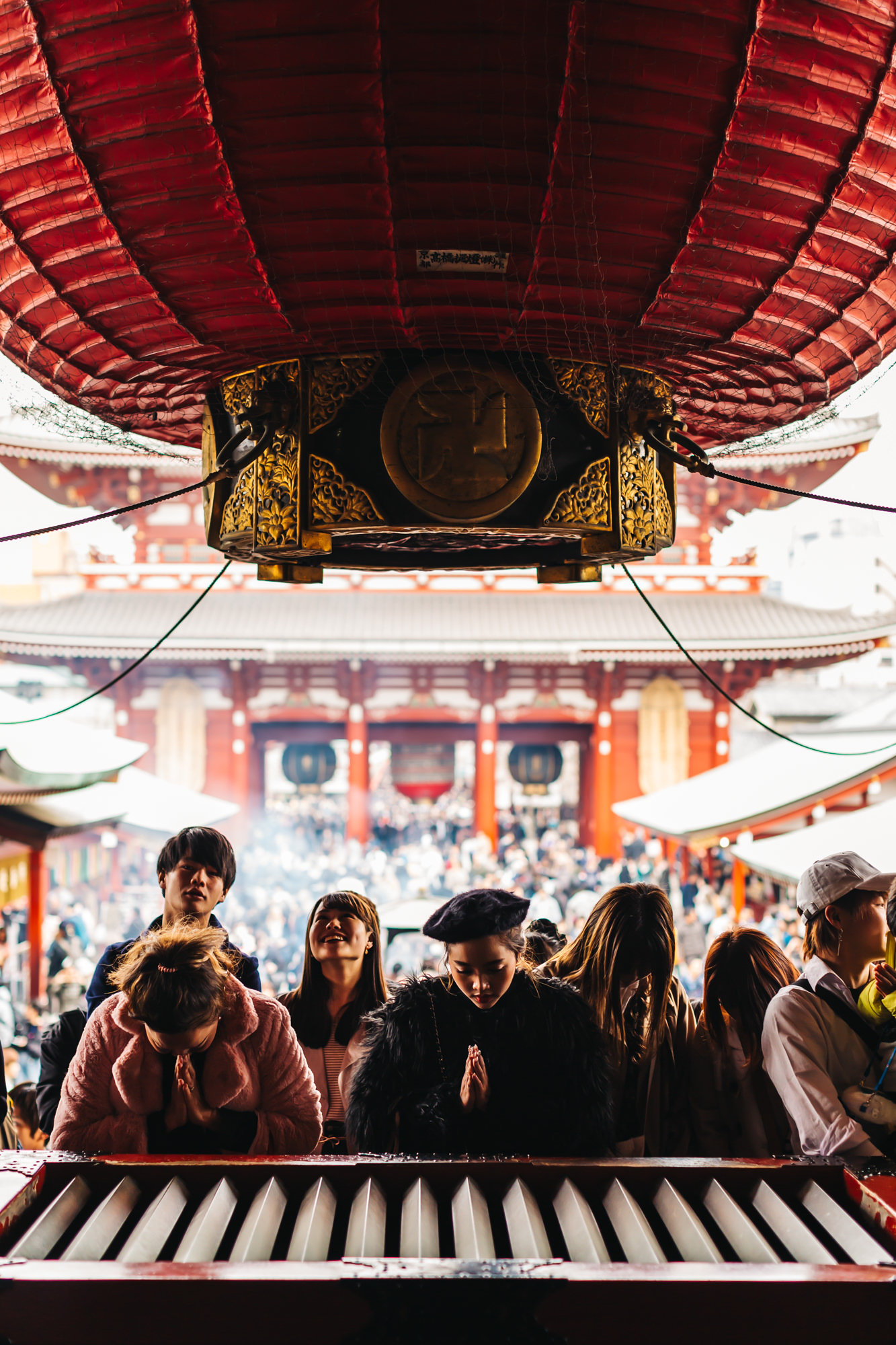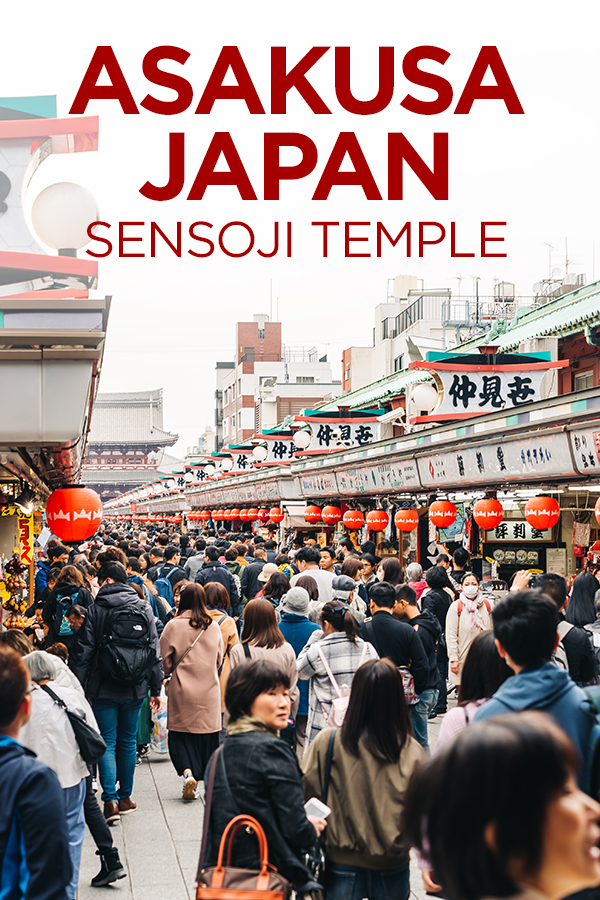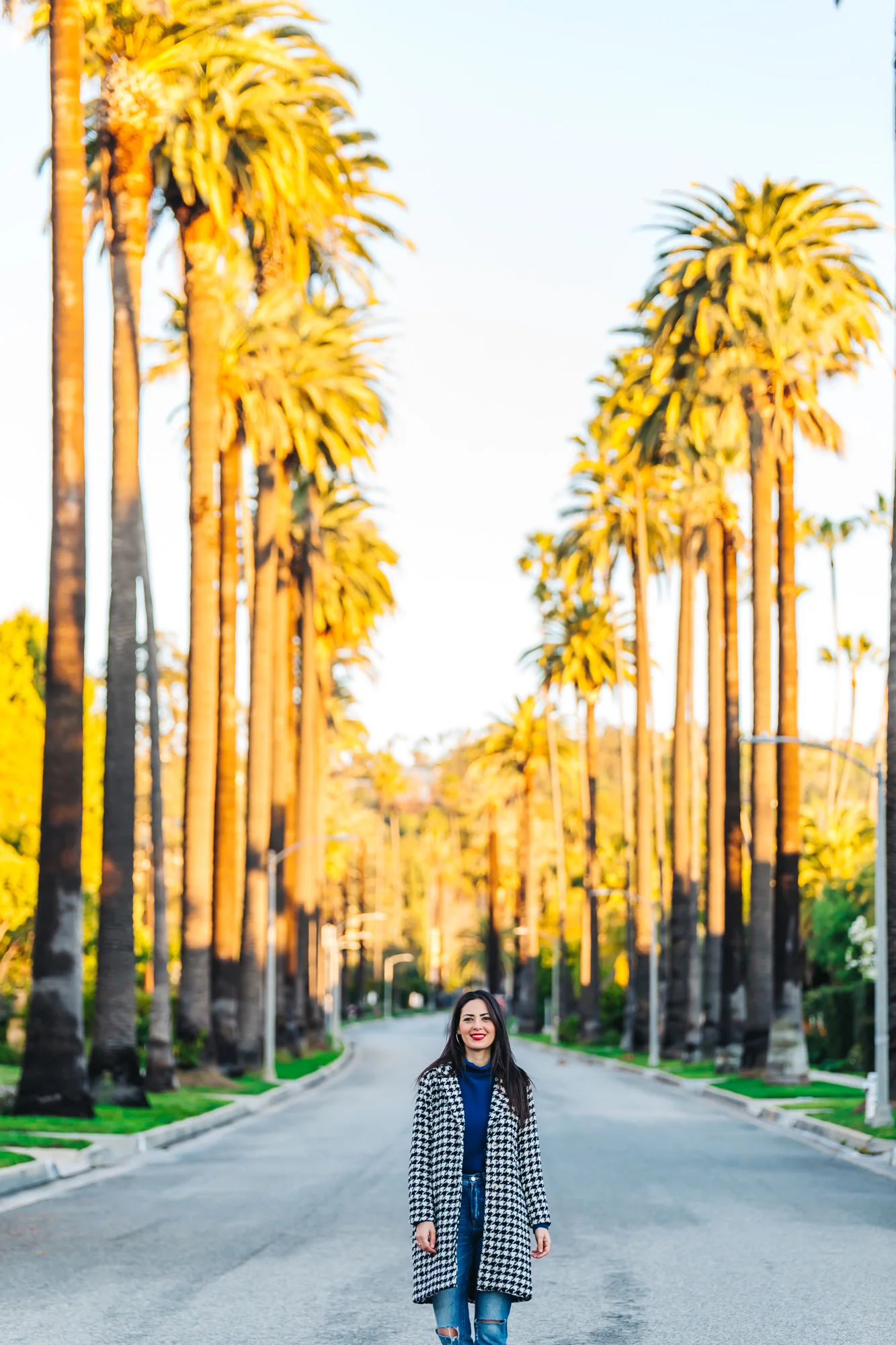8 Things You Should Know Before Visiting Asakusa Sensoji Temple During Cherry Blossom Season
/This post contains affiliate links, which means that at no additional cost to you if you click on one of the product links, we may earn a commission.
We feel lucky that we grew up in Narita that is home to a gorgeous Shinshoji Temple, so we rarely ventured out to other temples in Japan. This year, Crystal wanted to visit the famous Sensoji Temple in Asakusa, which is about an hour and a half away from our hometown.
Our little sister, Cindy, visited the Sensoji Temple about ten years ago and she said it was calm with few people visiting the area. Fast forward to today and it’s a totally different atmosphere. We were actually quite overwhelmed by the crowd and were surprised to see so many tourists (not locals) dressed in a kimono. It was fun exploring Asakusa and we wanted to give a few tips when visiting.
Nakamise Shopping Street
Crystal is not feelin this crowd
Our little sister and niece walking down Nakamise Shopping Street
1. Avoid Visiting During Cherry Blossom Season
If you want to avoid some of the crowds, we suggest visiting when it’s NOT during the cherry blossom season. Cherry blossom season in Tokyo is usually around the end of March to mid-April and Japan’s peak season for tourism is during this time.
Not only are millions of tourists flocking in to see these beautiful trees but the locals are also on spring break, so popular tourists destinations like Asakusa will be very crowded. As soon as we got to the temple’s main entrance, we were engulfed in a large crowd and it continues all the way down the Nakamise Shopping Street to the temple.
Check out the Pro’s & Con’s Of Visiting Japan In Cherry Blossom Season!
Gorgeous cherry blossom tree by the Sensoji Temple
Sensoji Temple in Asakusa
2. Take Photos at the Second Gate Where It’s Less Crowded
Because there are so many people, it’s pretty much impossible to get a shot alone. The main gate entrance called Kaminarimon, which means Thunder Gate, is where everyone stops first to take photos and for the most part, people are courteous, but good luck getting a shot without someone in it. We found that the second gate had way less people and it was much easier to snag a shot alone.
Kaminarimon - the first gate at the entrace
The second gate at Sensoji Temple
3. Try Japanese Street Food at Nakamise Shopping Street
The Nakamise shopping street is filled with various street food and souvenir shops. You will most likely walk down this street as it leads you to the Sensoji Temple. Our niece bought some souvenirs and we bought a bag of freshly made senbei (rice crackers). Almost everyone speaks English around the temple, so don’t hesitate to ask any questions. They’re more than happy to help.
Freshly made rice crackers on nakamise Street
4. Avoid the Melon Pan Shop at Kagetsudo
Although we love melon pan (sweet Japanese bread), this is not the place to get it. We appreciate the history behind this place, which started in 1945, but the bread itself was average at best. Save your money and get the melon pan at a local bakery instead. Or if you can, find a food truck that sells melon pan right out of the oven. It is HEAVEN.
Kagetsudo Melon Pan shop - since 1945
Huge melon pans at Kagetsudo
5. Utilize The Back Alley
When you are heading out of the temple and want to avoid the Nakamise shopping street, we suggest using the back alley streets. It’s definitely less crowded and it will get you back onto the main street much faster.
The back alley of Nakamise Shopping Street
6. Heal Yourself with Smoke
I purchased some incense at a booth right next to where the incense was burning. You light it up and place it inside the large earthenware called Jokoro. It is believed that the smoke from the incense burner has a healing effect, so you direct the smoke to the area of the body that you want healed.
Sensoji Temple in Asakusa
Candy healing herself with smoke
Everyone healing themselves at the Jokoro
7. Toss Money Into a Saisen Box
When you get to the temple, you will see a large box that people throw money into. Any amount of money is fine, but the 5 yen coin symbolizes good luck in Japan. Once the money is tossed into the box, you bow your head and make a wish. This is what most people (even Japanese) believe the tradition is; however, this is not the case. The reason you toss the money into the box is to toss your impurities. Impurities are the dangerous things that threaten a healthy life. Basically, you are placing your impurities into the coin and tossing the coin is throwing out those impurities. It is believed that money has the power to absorb misery and burns.
Making a wish at the saisen box
Our niece doing the purifying ritual at the Sensoji Temple
8. Eat Lunch at Natsunoya, A Local Mom-and-Pop Restaurant
We saw plenty of chain restaurants in the area but we wanted to eat a local restaurant that served traditional Japanese food. Luckily, we found the perfect mom-and-pop restaurant called Natsunoya. We were all so happy that we made the decision to eat here. Our little sister Cindy, who graduated from culinary school in Japan and was a chef at the Hilton, was pleasantly surprised and raved that the flavors were on point. All the dishes we ordered were made to order - the katsu (fried chicken cutlet), ginger pork, and salmon were all excellent. Even their miso soup was one of the best soups we’ve had. Their menu is small and although they don’t have an english menu, the staff (a husband and wife team) is very friendly and we would assume they would gladly help with your order.
Natsunoya restaurant in Asakusa
Chicken Katsu
Grilled Salmon Set
Final Thoughts
Despite the large crowds of people, we still had a fun time visiting the Sensoji Temple in Asakusa. Had we known how busy it was going to be, we might have tried to go first thing in the morning. We got there a little after 10AM and think if we went at the crack of dawn it would have been more peaceful. The temple is free and always open, so it’s definitely doable to go super early.
We’re not sure if it’s us just getting older, but we prefer temples like Narita Temple that are more calm with fewer people. If you happen to have a long layover in Japan at Narita Airport, visiting the Narita Temple is only one train stop away.
Tokyo skytree
Sensoji Temple in Asakusa


















































